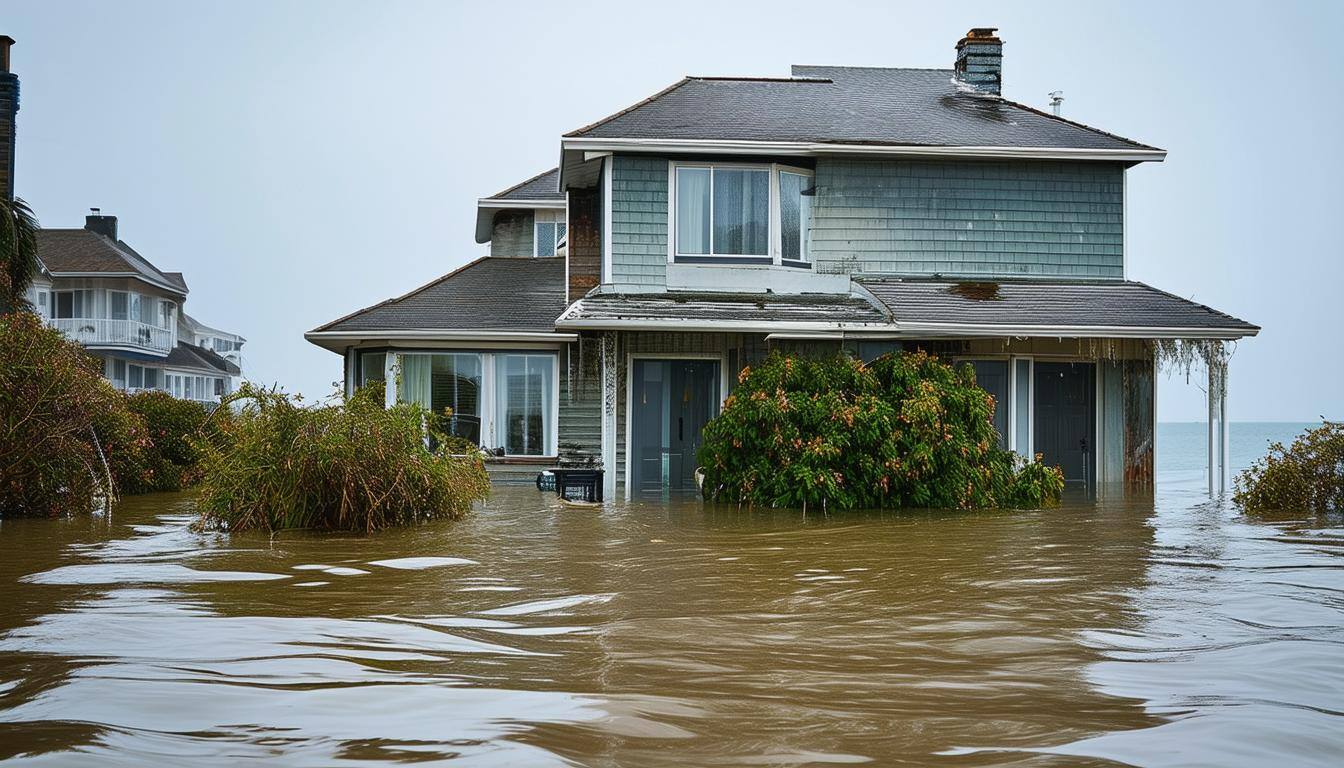
The rising cost of home insurance, exacerbated by climate change, is fast becoming a crisis for homeowners and lenders. Recent data from Aon shows that home insurance premiums are soaring, especially in disaster-prone regions. This trend is not only straining household budgets but is also raising concerns about the stability of the home loan market.
In addition to premium hikes, a new report, Home Insurance Affordability and Home Loans at Risk, from the Actuaries Institute highlights a dire warning about coastal flooding risks affecting over 500,000 properties in Australia. As the nation grapples with increasing natural disasters, this reality can no longer be ignored, and it’s pushing both insurers and financial institutions to reassess their strategies.
As of March 2024, 15% of Australian households now spend more than four weeks of their gross income on home insurance premiums. These escalating costs are especially challenging for homeowners in coastal areas, where flood risks and storm surges are increasing due to climate change. A report from the Insurance Council of Australia reveals that more than 500,000 coastal properties could be impacted by rising sea levels and flooding, making the situation even more urgent.
Northern Australia, particularly Queensland and the Northern Territory, faces the steepest increases in premiums due to its high exposure to cyclones and floods. These regions are already grappling with natural disasters, and the threat of coastal flooding adds to the financial strain on homeowners.

The rising cost of insurance is not just a household issue—it has far-reaching consequences for lenders. Currently, 5% of Australian households with home loans are under extreme pressure to afford home insurance, with these households holding $57 billion in outstanding loans. This represents 3% of the total home loan market.
If these homeowners can’t afford to maintain the required insurance on their properties, lenders face increased exposure. Properties left uninsured are a significant risk, particularly in areas prone to natural disasters. In the event of property damage from coastal flooding or storms, both homeowners and lenders could face devastating losses.
The threat to Australia’s coastal properties can no longer be ignored. According to the Aon Climate Valuation report also cited by Insurance News, as many as 500,000 properties are at risk of coastal flooding by 2030. For homeowners in these regions, the financial burden of rising insurance premiums, coupled with increasing risks of property damage, could push many to a breaking point. The insurance industry, governments, and financial institutions must work together to develop solutions that mitigate these risks.
To address the growing risks, industry leaders are calling for innovative solutions such as resilience loans, which would help homeowners make their properties more resilient to extreme weather events. These loans could fund upgrades such as flood barriers, stronger roofs, and other protective measures that could lower insurance premiums and reduce the risk to both homeowners and lenders.
At InsuredHQ, we understand the complexities of this evolving landscape. Our digital-first insurance solutions empower insurers to respond quickly and efficiently to market changes. Our comprehensive core administration software and flexible APIs enable insurers to offer tailored coverage that balances affordability with risk management.
The insurance industry faces a rapidly changing environment, with climate risks posing unprecedented challenges. By leveraging the right tools and working collaboratively, insurers and financial institutions can mitigate these risks and protect their customers. At InsuredHQ, we are committed to providing the technology and expertise needed to navigate this uncertain future, helping our clients stay competitive while delivering essential coverage to homeowners.
These Stories on insurance
Copyright © 2023 InsuredHQ Limited. All Rights Reserved - InsuredHQ Privacy Policies - Glossary
No Comments Yet
Let us know what you think